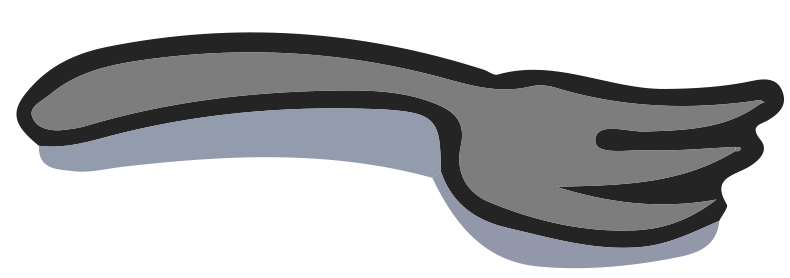Dear Tamar:
I try and eat local and seasonally. I receive a bountiful CSA weekly. I despise going into my Kroger. But I see dreamy recipes year round that include things I don't have access to here in the midwest. I feel the itch to make fun, new, exciting things. How do I skillfully adapt all the wonderful recipes in my cookbooks to fit my location and season?
-Not-so-endless-summer Sally
Dear Not-so-endless-summer Sally,
First, as Charlie Brown would say: “Good grief.”
Good grief. Good grief. Good grief. Is this grief good? Is it righteous? What does grief incubate? TBP (to be pondered)…
I’m going to answer your question now, because for the time being, the world still turns. We still get hungry. We still shop and cook.
Your letter made me think of a period in my early twenties during which I adhered to a philosophy I’ll call Universal Contrarianism. If something—whether political, aesthetic, spiritual—was sacrosanct, I defiled it. For an unfortunate few years, I managed to be both self-righteous and cruel; high-minded and incurious. A peculiar object of my disdain, albeit for a short period, was organic food. I remember walking down the aisle of a now defunct Gourmet Garage on 7th avenue and suggesting that the organics section replace its signage. I offered “For suckers” as a candidate.
I don’t remember the source of my objection. Within two years, I was a farmers’ market habitué and working for Dan Barber of Blue Hill and Blue Hill at Stone Barns. Within three, I was chef of a farm-to-table restaurant in Georgia. Within five, I cooked at Chez Panisse.
But it was while I held an objection to what I’d deemed a Bobo shibboleth that I first really learned to cook. I spent nights trying to recreate my favorite Thai dishes, working my way through Hot, Sour, Salty, Sweet. I pored over my first Marcella Hazan, and Biba’s Taste of Italy. I flipped through two binders into which I pasted recipes clipped from Gourmet and Saveur and Bon Appetit and Food & Wine. My ingredients came from Chinatown, because everything was there, and it was cheap. I frequented Gourmet Garage, too, where hot house tomatoes, shiny as golf balls, were available, whether it was November or August. I shopped and cooked, in those days, independent of any consideration other than cost, and with a kind of fervor I’m jealous of when I think back on it now.
It wasn’t long before I did an about-face. I read about conventional agriculture’s impact on our soil. I read about confined animal feeding, mono-cropping, farm subsidies, pesticides, the reduced nutrient density of conventional crops. I read Silent Spring. I read Wendell Berry and Aldo Leopold and Wes Jackson. Eventually, I turned thirty.
I mention this all because it was convenient to have a working knowledge of foods from many climates and cultures before I learned the importance of supporting local, biodiverse, organic, regenerative agriculture. It was more than convenient. It would have been nearly impossible to learn the balance of flavors in Thai food without plucking cilantro and limes and little globe eggplants from stalls in Chinatown in the depth of winter. I wouldn’t have learned to make Moqueca or Pho or Jiaozi.
And I’m grateful for the timing because I only can happily cook as locally and seasonally as I do because I learned techniques and combinations without my hands bound by principle. Today, my eating local, biodiverse, etc. foods relies on me having a broad arsenal, which includes Thai curry—a perfect use for New York squash—and Sichuan stir-fried potatoes, and wondrous Korean ways with radishes and turnips.
I still buy out-of-season ingredients I feel I need to be excited about in-season ones I have. I prefer to buy them from small, local shops—like our sliding scale-priced grocery store or my favorite butcher shop than a national supermarket chain. It helps keep me excited about the squash/potatoes/turnips, and I’m supporting a business I believe in.
Lest I seem to be asserting that principle is nothing but a shackle, another path—which can, because I’m being figurative, be walked simultaneously—is to spend cold midwestern months experimenting with foods from cuisines that developed in conditions similar to yours. A few years ago I traveled to Finland, where I ate hot salmon soup every day. I returned home and made a lot of hot fishy soups before tiring of them. Several winters back I spent some days looking at Darra Goldstein’s Beyond the North Wind during an icy December. There was little better than trudging around town looking for farmers’ cheese to make syrniki (little cheese pancakes) or ladling out blini and splurging on Paddlefish caviar. Last winter, I did it with Alpine Cooking, and was mostly content figuring out my own, simplified version of bread soup with chicory and egg, and practicing my schnitzel-pounding. I’m already planning to spend at least some of the coming ingredient-poor seasons reading and following a zillion recipes for DakJuk.
Dear cook, if, on a short, cold, midwestern day, you need cilantro, and limes, coconut milk, fish sauce, fresh chilies, to make your squash enticing, give yourself permission to buy them. Powered by your commitment to local food, choose this chilly season to experiment with making pierogi. I do both, and will continue to. I’m thankful for my misguided conviction, long ago, that there was nothing wrong with endless summer. It has helped me make sense, today, of seasons in their times.





Good grief, indeed. Thanks for this. Was on the hunt for a Thai squash curry recipe.